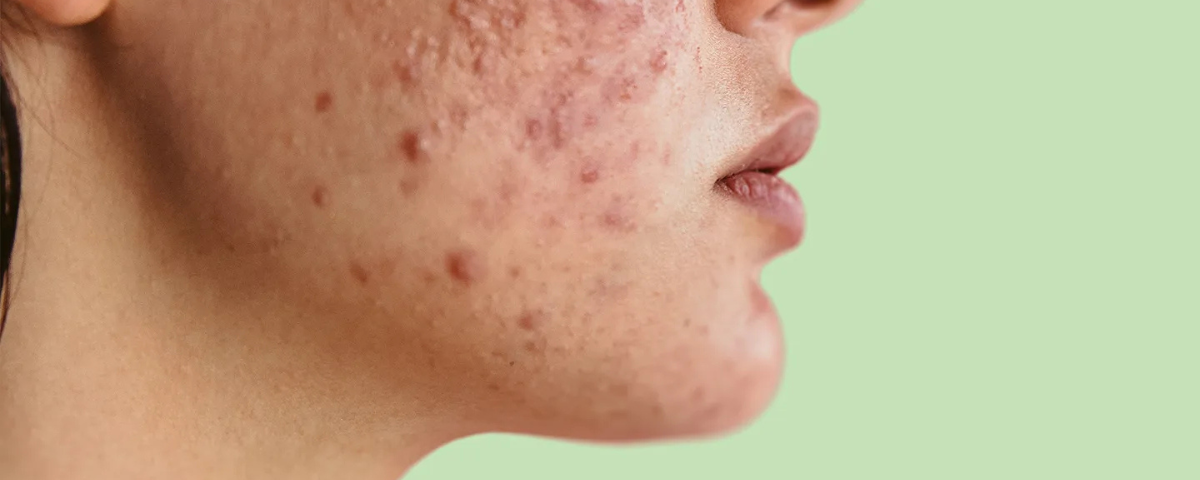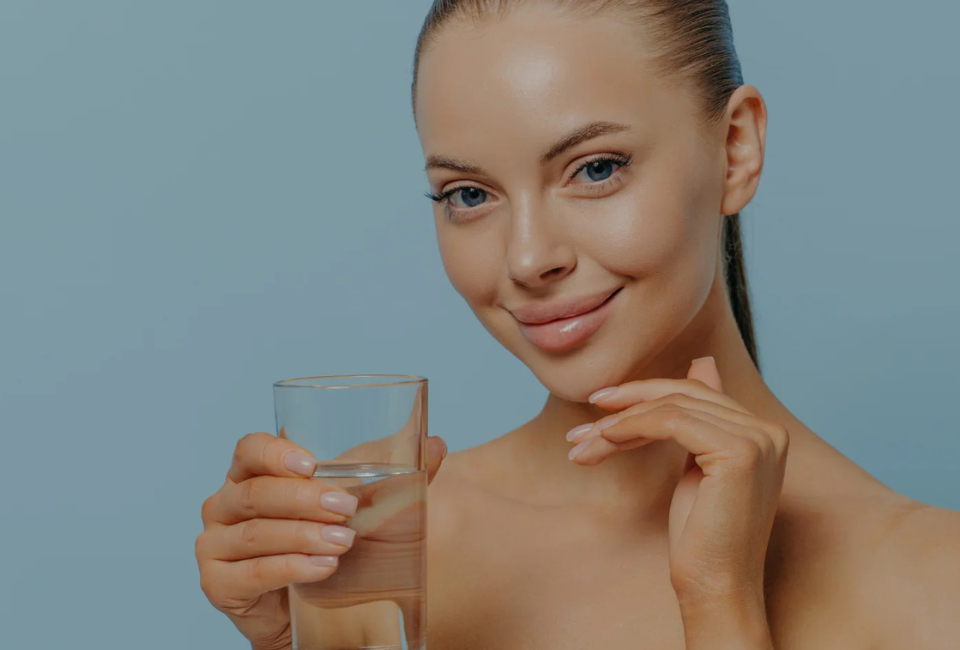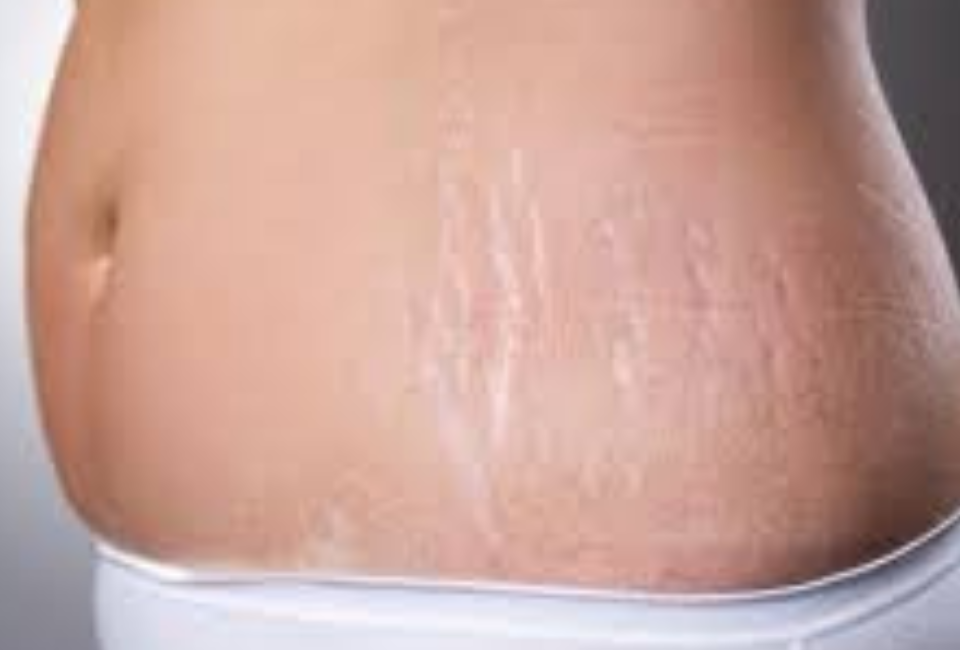- Make An Appointment
- +91-9460006594
- +91-9571548977
- info@jodhpurskintreatment.com
Types of Acne by Grade: How to Identify and Treat Each One

Say Goodbye to Stretch Marks: 5 Proven Treatments for Smoother Skin
May 17, 2025
Teenage Acne & Pimples: Causes, Areas & Puberty Effects
June 12, 2025Table Of Content
Understanding the Grades of Acne: An Indian Perspective
Acne, also known medically as acne vulgaris, is one of the most common skin concerns faced by people across India, affecting individuals of all age groups, especially adolescents and young adults. With increasing pollution, stress, and hormonal imbalances becoming common in urban environments, the prevalence of acne vulgaris grades has seen a steady rise.
While some people experience mild breakouts that are easy to manage, others deal with severe forms that require medical intervention. Understanding the grades of acne is essential for effective treatment and preventing long-term skin damage.
What Is Acne and Why It Occurs in India?
Acne occurs when hair follicles become clogged with oil, dead skin cells, and bacteria. In India, climatic factors like humidity, along with dietary habits and stress, contribute significantly to the severity and frequency of acne breakouts.
Medical professionals classify acne into four main grades of acne, ranging from mild to severe. These classifications help dermatologists determine the right course of treatment.
The 4 Grades of Acne Explained
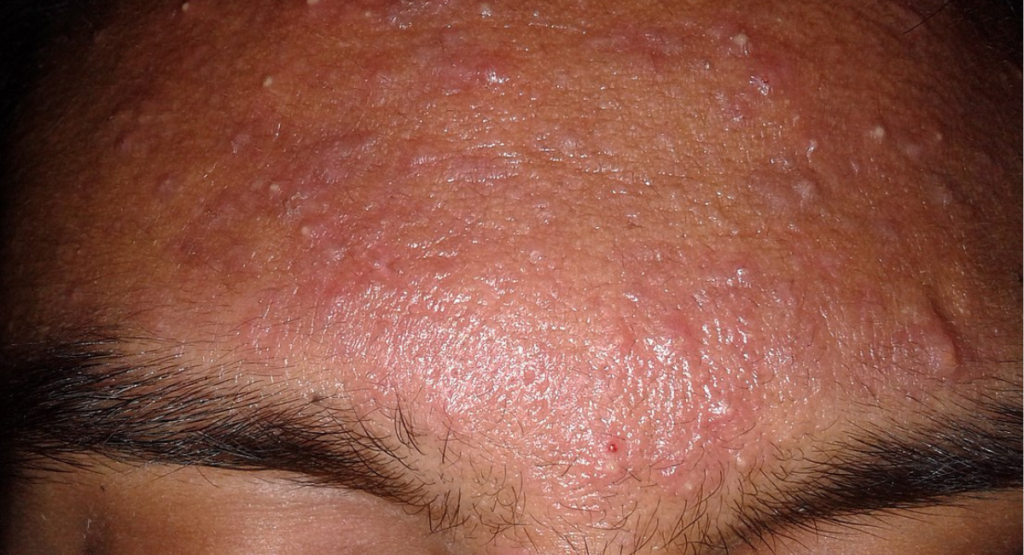
Grade 1 Acne: The Mildest Form
Grade 1 acne is the least severe type of acne and is most commonly seen in teenagers and young adults in India. This type includes whiteheads, blackheads, and small comedones without significant inflammation. It is often triggered by environmental factors and hormonal changes during adolescence.
In Indian cities, rising air pollution and poor skincare habits contribute to grade 1 acne, especially among those with oily skin.
Management:
- Regular face washing with mild cleansers
- Using non-comedogenic products
- OTC treatments with salicylic acid or benzoyl peroxide
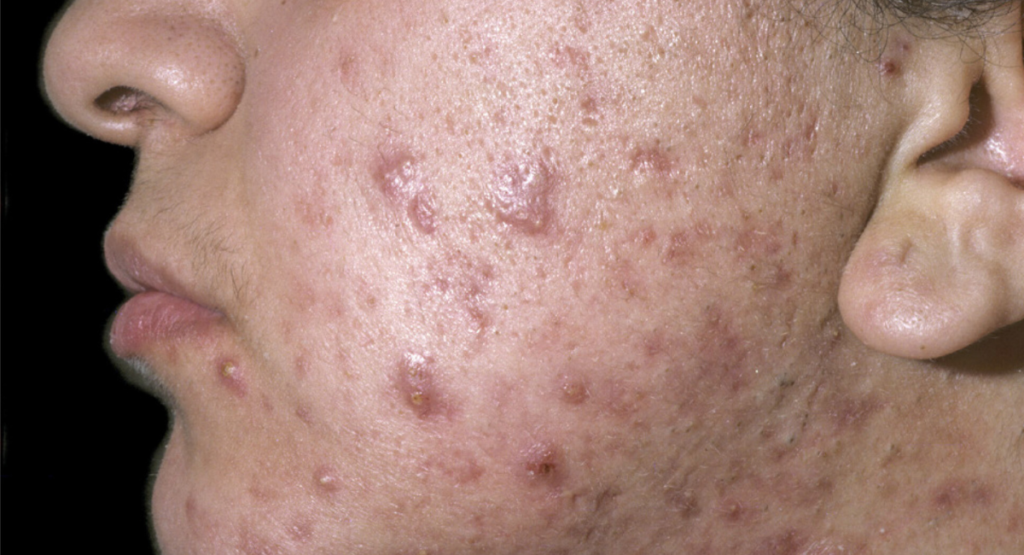
Grade 2 Acne: Early Inflammatory Stage
Grade 2 acne is a step above the mild version and includes more noticeable inflammation. It typically presents with papules and pustules, often appearing on the cheeks, forehead, and chin—areas affected the most by sebum production in India’s humid weather.
If not managed early, grade 2 acne can escalate quickly to more serious forms, especially when exposed to poor hygiene, diet, and hormonal imbalances.
Management:
- Topical antibiotics
- Anti-inflammatory creams
- Gentle exfoliants
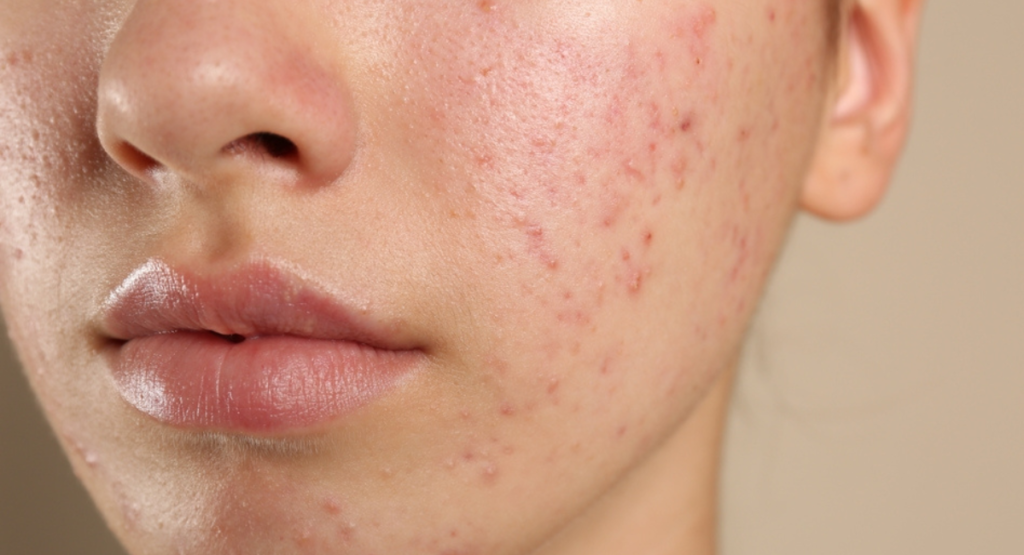
Grade 3 Acne: Moderate Inflammatory Acne
Grade 3 acne involves a significant increase in the number of inflamed papules and pustules. Nodules may also start appearing at this stage. In India, this form is often seen in individuals dealing with stress, poor dietary choices (high in sugar and dairy), or improper skin care routines.
At this level, acne vulgaris grades start becoming more painful and more likely to leave scars if not treated professionally.
Management:
- Prescription antibiotics
- Retinoids
- Chemical peels (under dermatological supervision)
Grade 4 Acne: The Most Severe Form
Grade 4 acne is the most severe and distressing among the grades of acne. This includes large, painful cysts and nodules that penetrate deep into the skin. It is most common in individuals with a genetic predisposition or untreated hormonal issues such as PCOS—a frequent concern among Indian women.
Grade 4 acne can severely affect a person’s self-esteem and may require a combination of oral medication, lifestyle changes, and clinical treatments.
Management:
- Isotretinoin (only under prescription)
- Hormonal therapy
- Drainage procedures and laser treatments
Note: Individuals suffering from grade 4 acne often benefit from combination therapies that also address premature aging concerns. For example, Anti Aging Treatment in Jodhpur offers dual-action solutions that tackle both acne and skin aging.
What Are Acne Vulgaris Grades?
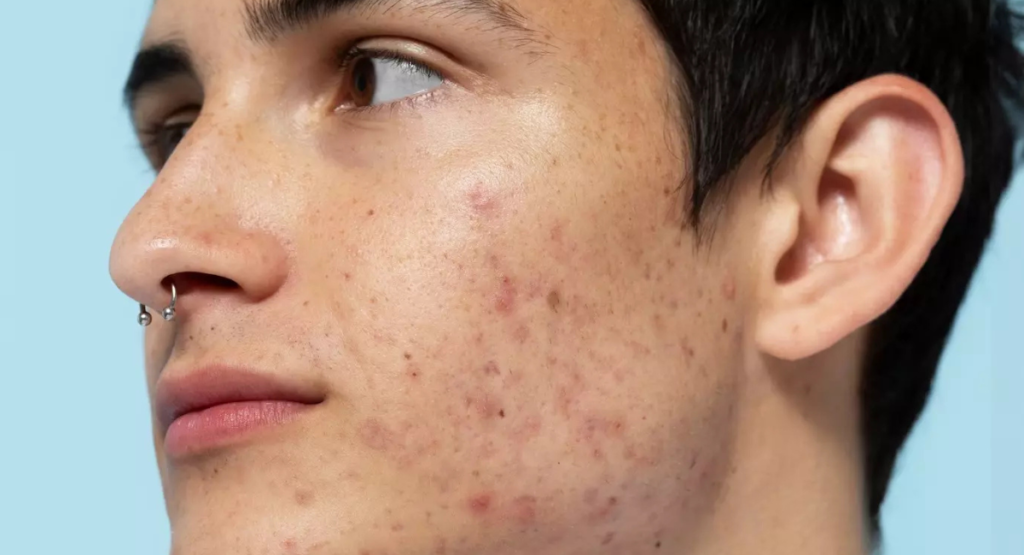
The term acne vulgaris grades refers to the clinical classification of acne severity. These grades are not only essential for choosing treatment options but also help in tracking progress over time. In India, where dermatological awareness is rapidly increasing, recognizing these grades of acne can help people seek early intervention and avoid unnecessary scarring.
Why Acne Is So Common in India
Several lifestyle and environmental factors prevalent in India contribute to the widespread occurrence of acne:
- Climate: Humid conditions lead to excessive sweating and oil buildup.
- Diet: High consumption of spicy and fried foods can trigger flare-ups.
- Stress and Hormones: Competitive lifestyles, especially among students and working professionals, can elevate stress hormones, worsening acne.
- Pollution: In metros like Delhi and Mumbai, poor air quality significantly clogs pores, leading to all acne vulgaris grades.
Treatment Options Available in India

While over-the-counter solutions work for grade 1 acne and grade 2 acne, moderate to severe cases like grade 3 acne and grade 4 acne need professional intervention.
Popular Acne Treatments in Indian Dermatology Clinics:
- Chemical Peels (Salicylic Acid, Glycolic Acid)
- Laser Therapy
- Photodynamic Therapy
- Oral Antibiotics and Hormonal Medications
- Ayurvedic and Herbal Remedies (popular in traditional Indian skin care)
When to See a Dermatologist
If you’re dealing with persistent or painful acne that doesn’t improve with home remedies, it’s time to consult a dermatologist. Seek help especially if:
- The condition falls under grade 3 acne or grade 4 acne
- Acne is leaving marks or scars
- There are signs of cysts or nodules
- There’s emotional or psychological impact
In a diverse and climate-sensitive country like India, understanding the grades of acne is crucial for timely and effective treatment. Whether you’re managing early-stage grade 1 acne, controlling grade 2 acne, or seeking advanced solutions for grade 3 acne or grade 4 acne, knowing where your condition falls on the acne vulgaris grades scale can empower you to take control of your skin health.
Early action, personalized care, and the right skincare practices can go a long way in preventing scars and restoring clear, healthy skin—regardless of geography.
FAQ’s
1. How do you get rid of Grade 4 acne?
Grade 4 acne is severe and typically requires medical treatment. Common treatments include:
- Oral isotretinoin (Accutane)
- Oral antibiotics (e.g., doxycycline)
- Hormonal therapy (for females, like birth control pills or spironolactone)
- Topical retinoids and benzoyl peroxide (as adjuncts)
A dermatologist must supervise treatment for Grade 4 acne due to its intensity and risk of scarring.
2. What is acne Grade 4?
Grade 4 acne, also known as nodulocystic acne, is the most severe form. It features:
- Deep cysts and nodules
- Widespread inflammation
- Pus-filled lesions
- Significant risk of scarring
3. What is the highest grade of acne?
Grade 4 is the highest and most severe grade of acne, often requiring systemic treatment under medical supervision.
4. What is the difference between Grade 3 and Grade 4 acne?
- Grade 3 acne involves numerous inflamed papules and pustules, with some nodules.
- Grade 4 acne has extensive nodules, cysts, and scarring, covering large areas of the skin.
5. What are the 4 grades of acne?
- Grade 1 (Mild) – Mostly blackheads and whiteheads (non-inflammatory)
- Grade 2 (Moderate) – Papules and pustules with slight inflammation
- Grade 3 (Moderately severe) – More inflamed papules/pustules, occasional nodules
- Grade 4 (Severe) – Deep cysts, nodules, and potential scarring
6. What are the 4 stages of acne?
- Microcomedones – Initial blockage in the pores
- Comedones – Blackheads and whiteheads
- Inflammation – Papules and pustules form
- Nodules/Cysts and Scarring – Deeper infections and potential tissue damage
7. What is the grading scale for acne?
The acne grading scale is:
- Grade 1: Mild (non-inflammatory)
- Grade 2: Moderate (papules/pustules)
- Grade 3: Moderately severe (inflammatory + nodules)
- Grade 4: Severe (nodules/cysts + risk of scarring)
8. Is Grade 3 acne severe?
Yes, Grade 3 acne is moderately severe. It requires prompt dermatological care to prevent worsening or scarring.
9. How do you get rid of Grade 3 acne?
Treatment options include:
- Topical retinoids
- Benzoyl peroxide + clindamycin
- Oral antibiotics (e.g., minocycline or doxycycline)
- Hormonal treatments (in females)
Consult a dermatologist for a customized treatment plan.
10. What does Grade 3 acne mean?
Grade 3 acne means:
- Multiple inflamed papules and pustules
- Presence of some nodules
- Greater skin inflammation and risk of scarring
11. Why did I get acne in 3rd grade?
Acne in children (prepubescent) can be due to:
- Hormonal fluctuations
- Early onset of puberty
- Genetic predisposition
Pediatric acne should be evaluated by a dermatologist to rule out underlying causes.
12. What is type 4 acne?
“Type 4 acne” usually refers to Grade 4 or nodulocystic acne, characterized by:
- Deep, painful nodules or cysts
- Severe inflammation
- High chance of scarring
13. How do you get rid of Grade 1 acne?
Grade 1 acne (mild) can often be managed with:
- Over-the-counter products (benzoyl peroxide, salicylic acid)
- Gentle cleansers
Topical retinoids
Maintaining a consistent skincare routine is key.
14. What is Grade 2 acne?
Grade 2 acne includes:
- Frequent blackheads and whiteheads
- Papules and pustules
Mild inflammation
It’s a step up from Grade 1 and may need prescription topicals.
15. How do you treat acne vulgaris Grade 1?
Treatment includes:
- Salicylic acid cleansers
- Benzoyl peroxide creams
- Topical retinoids (e.g., adapalene)
- Avoiding oily products and over-washing
16. What are the 4 grades of acne vulgaris?
Same as general acne grades:
- Grade 1: Comedonal acne
- Grade 2: Papular/pustular acne
- Grade 3: Inflammatory acne with nodules
- Grade 4: Nodulocystic acne
17. What is the classification of acne vulgaris?
Acne vulgaris is classified by:
- Severity (Grades 1–4)
- Type of lesions (non-inflammatory vs inflammatory)
- Distribution (face, back, chest)
18. What are the stages of acne vulgaris?
- Clogged pores (comedones)
- Bacterial growth
- Inflammation
- Nodule/cyst development and potential scarring
19. What is Grade 3 acne?
Grade 3 acne features:
- Moderate to severe inflammation
- Numerous papules and pustules
- Some nodules
- Often spreads to the back or chest
20. How do you get rid of Grade 2 acne?
Treatments include:
- Topical antibiotics (e.g., clindamycin)
- Retinoids
- Salicylic acid cleansers
- Light chemical peels
A dermatologist can help adjust treatment based on your skin type.
21. What is Type 2 acne?
“Type 2 acne” often refers to Grade 2 acne, involving:
- Frequent whiteheads/blackheads
- Papules and pustules
- Mild inflammation
22. Is Salicylic Acid 2% good for acne?
Yes, 2% salicylic acid is effective for:
- Unclogging pores
- Reducing blackheads/whiteheads
- Minimizing mild inflammation
Ideal for Grades 1 and 2 acne.

